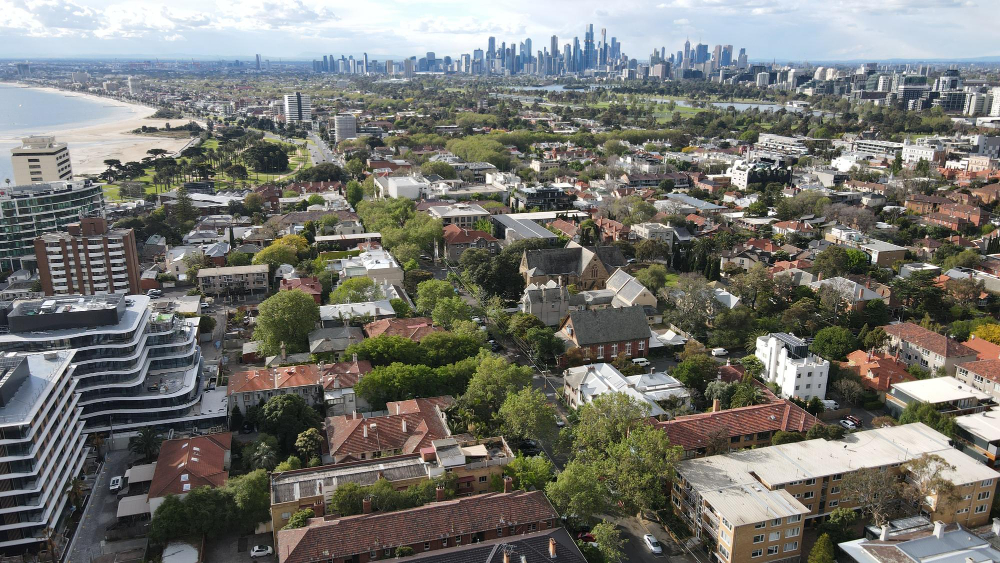Owning a home is back on the agenda for a lot of Aussies, even with prices and rates still biting. Mortgage applications have jumped by more than ten per cent, which tells you one thing straight away: first home buyers are not giving up, they are simply changing how and where they play the game.
Instead of chasing big freestanding houses at any cost, more buyers are zoning in on well connected corridors packed with units and townhouses. These pockets tend to sit under common lending thresholds, link neatly into train lines and major roads, and still have access to jobs, cafes and services. In other words, you are trading a bit of space for a smarter position on the board.
This article is here to help you do that with intent, not guesswork. You will see which suburbs across New South Wales, Queensland and Victoria are drawing serious first home buyer interest, where the quieter “opportunity pockets” are hiding, and how to judge whether a property actually fits your long term plans.
Along the way, we will mix data, strategy and simple street-smart checks you can use at the next inspection. And if you decide you do not want to face the selling agents on your own, AbodeFinder lets you compare trusted buyers agents and suburb options across Australia, so you can team up with someone who knows those streets as well as the local agents do.
Why first home buyers are surging again in 2025
The affordability ceiling and what it means for you
On paper, it looks a bit confusing. Mortgage applications are up more than 10 per cent compared with last year, yet total mortgage balances are flatter. That tells you something important: people still want to buy, they are just hitting a ceiling on how much they can safely borrow and spend.
That ceiling shows up in the way buyers crowd around certain price bands and property types. Instead of spreading out evenly across the market, first home buyers tend to stack up around the suburbs and dwelling types that sit neatly under common lending thresholds. Think older units, townhouses and modest houses in transport corridors rather than glossy new builds at the edge of the map.
Government deposit schemes and stamp duty concessions also play a quiet role here. On one hand they are helpful, because they can get you into the market sooner with a smaller deposit. On the other hand, they funnel more buyers into the same price ranges and postcodes. That extra demand can heat up already popular pockets, which is why you sometimes see strong competition for fairly ordinary properties in “grant friendly” areas.
For you, the big takeaway is this: the market is not just about prices and interest rates, it is about how many other buyers are squeezed into the same lane you are in. Understanding that lane is the first step in choosing suburbs and property types where your budget actually has some power.
Why units and townhouses are back in favour
A few years ago, many first home buyers were still stretching for freestanding houses, even if it meant pushing far out from the city. Now there is a clear tilt back towards units and townhouses, especially in pockets with strong rail links, bus routes, nearby jobs and decent lifestyle appeal.
Attached dwellings in these areas tick a few key boxes at once. They usually come in under those crucial lending limits, they shorten the commute, and they keep you close to shops, cafes and services. For a lot of buyers, losing a bit of backyard is worth it if it means gaining time back each week and staying plugged into a suburb that actually suits their daily life.
Of course there are trade-offs. A smaller home in a better postcode gives you walkability, rental demand and long term appeal, but you may need to compromise on size, parking or outdoor space. A bigger home further out can feel great at first, then start to sting when petrol prices rise or long commutes eat into your time and energy.
Strong rental demand is another reason units and townhouses are attracting attention. Inner and middle ring suburbs with steady tenant interest tend to hold values better over the long run. That matters if you plan to turn your first home into an investment later, or want the option to rent it out while you upgrade.
Put simply, many first home buyers are shifting from “biggest thing I can afford” to “smartest position I can afford”. Units and townhouses in the right corridors are often where those two lines meet.
First home buyer hotspots you need on your radar
Look at the recent credit trends and you can see first home buyer demand clustering in clear corridors, rather than spreading evenly across every capital city. Certain pockets in New South Wales, Queensland and Victoria are doing most of the heavy lifting.
New South Wales – west and inner south doing the heavy lifting
In New South Wales, Sydney’s west and inner south are where a lot of the action is. Suburbs such as Parramatta, Blacktown, Castle Hill, Hurstville and Marrickville keep showing up in first home buyer enquiries for a few simple reasons.
They have rail or metro, decent bus links, access to major employment hubs and plenty of older apartments and townhouses that sit under common lending thresholds. Parramatta gives you a true second CBD feel with strong job access. Blacktown and Castle Hill benefit from the metro and road links. Hurstville offers a busy centre with great train access. Marrickville combines city proximity with a big pool of older units. For first home buyers who want a mix of convenience and a semi-realistic price, these areas tick a lot of boxes.
There is also a psychology piece here. People feel safer buying in a name they recognise, so they follow the herd into these “known” hubs. That can help you, because it usually means more buyers and tenants in the future and better liquidity if you decide to sell. The flip side is competition. When everyone piles into the same auctions, it can fuel bidding wars and push prices above what the property is really worth. The key is to understand the herd, then work the quieter streets and micro pockets inside those same suburbs.
Queensland – Gold Coast to Brisbane lifestyle corridors
In Queensland, the hotspots stretch along the Gold Coast to Brisbane corridors that balance lifestyle with a workable commute. Suburbs such as Pimpama, Southport, West End, Coorparoo and Palm Beach are classic examples.
Pimpama sits in that sweet spot between Brisbane and the Gold Coast, with newer housing and townhouses that appeal to young buyers. Southport benefits from the light rail, Broadwater access and plenty of attached dwellings at different price points. West End and Coorparoo are inner Brisbane favourites where you trade some space for cafes, river walks and quick trips into the CBD. Palm Beach combines beach lifestyle with road access that still allows a commute north.
For years, Brisbane and the outer corridors have been steady favourites for first home buyers, because you can still find attached stock that sits under the price bands common in Sydney and parts of Melbourne. The consistent theme is the same: corridors with decent transport, lifestyle appeal and a pool of units and townhouses that fit within stricter borrowing limits.
Victoria – when inner city and growth corridors meet
In Victoria, you can see two stories playing out at once. On one side there is renewed interest in the inner city. Melbourne CBD, Richmond, Southbank and South Yarra are back on the list for first home buyers who are happy to trade space for walkability and amenity. On the other side, growth corridors such as Tarneit are still popular with buyers who want more room and are comfortable heading further out.
Inner Melbourne, Richmond, Southbank and South Yarra offer strong public transport, restaurants, shopping and serious rental demand. Many first home buyers here are thinking ahead to life stages where they may keep the property as an investment, so inner city units and smaller townhouses start to look more like stepping-stones than forever homes.
Tarneit sits in a different bucket. It is a growth corridor with newer estates, train access into the city and a spread of townhouses and houses that usually come in under inner city prices. For buyers who want a bit more space but still need train access, it often makes the shortlist.
Recent hotspot lists reinforce Melbourne’s role as a national first home buyer hub, with a high concentration of suburbs that meet the typical budget, transport and dwelling mix criteria. For you, the opportunity is to understand how inner city options and outer growth areas each support a different strategy, then line up your choice with the way you actually want to live and invest over the next decade.
“Opportunity pockets” where the numbers still stack up
This is where you play the game, not the crowd. While everyone else chases the same headline suburbs, there are quieter pockets where the numbers can still work for a first purchase. The homes might not trend on social media, but they can give you a more comfortable repayment, less pressure at auction and a better chance of getting a solid first step on the ladder.
NSW suburbs to watch beyond the obvious
In New South Wales, places like Leumeah, Forestville, Emu Plains, Como and Stanhope Gardens are good examples of suburbs that sit closer to typical first home buyer budgets. They are not as loud as Parramatta or Marrickville, yet they still offer train links, access to jobs and a mix of properties that do not stretch the borrowing calculator to its limit.
For budget-conscious buyers, well-kept strata stock is often where the smart moves happen. Older units and townhouses with modest body corporate fees can give you a lower entry price and lower ongoing outgoings than a freestanding house with constant maintenance surprises. If the building is structurally sound, the sinking fund is healthy and common areas are looked after, that combination can free up cash each month for extra repayments or a savings buffer.
The key in these suburbs is to focus less on what is flashy and more on what is reliable. You want a solid building in a liveable street, close enough to transport and services that future tenants or buyers will see the appeal straight away. That is how a quiet suburb can still pull its weight as an investment over time.
QLD suburbs with sharper buy-in prices
In Queensland, Chapel Hill, Holmview, Daisy Hill, Brassall and Goodna often show up as areas where you can still find townhouses and established units that clear bank buffers. Prices are generally sharper than in the busiest inner-city pockets, yet you still get access to schools, parks and major roads.
The trade-off is usually a slightly longer commute. That is where you need to be honest with yourself. If an extra fifteen or twenty minutes of travel time saves you hundreds of dollars a month on repayments and lets you hold a healthy cash buffer, that might be a trade you are happy to make. Lower mortgage stress can be worth more than shaving a few minutes off the drive or train trip.
When you look at these suburbs, ask two simple questions. First, can I live with this commute for the next few years. Second, does the saving give me enough breathing room to ride out rate rises or life changes. If the answer to both is yes, then the suburb deserves a spot on your shortlist, even if it is not the current favourite on social media.
VIC entry points under the metro median
In Victoria, Melton South, Burnside, Keilor Downs, Skye and Roxburgh Park tend to sit under the wider metro median. They work as “entry ramps” into the market, often through newer townhouses or compact houses that still get you into a reasonable pocket of Melbourne.
These areas line up well with the “buy the stepping-stone, not the forever home” mindset that Damian Collins talks about. The idea is simple. Your first property does not have to tick every box for life. It just needs to be a solid, affordable asset in a decent area that you can hold, improve and eventually leverage into your next move.
That might mean choosing a townhouse in Melton South or Roxburgh Park with good transport links, rather than stretching for a bigger home in a suburb that keeps you awake at night worrying about repayments. Once you have built some equity and your income has grown, you can look at upgrading, keeping the first place as an investment or selling to fund the next step.
When you think about these Victorian suburbs as stepping-stones instead of final destinations, the decision becomes less emotional and more strategic. You are using the market to move forward, one smart position at a time.
Where a buyers agent fits into your first home plan
Buying your first place can feel like you are walking into a game where everyone else already knows the rules. The selling agent, the auctioneer, even some of the other bidders have done this before. A good buyers agent, backed by the right tools, is how you even things up.
Level the playing field against selling agents
Selling agents have one job: get the best result for the vendor. They are paid by the seller, they see fresh price data every day and they know exactly how to push emotion at open homes and auctions. That does not make them the enemy, but it does mean you should not rely on them as your main source of advice.
A buyers agent sits on your side of the table. Their role is to:
-
Filter out poor or risky stock before you waste weekends inspecting it
-
Look through recent sales so you are working off current numbers, not guesswork
-
Handle negotiations or bidding so you are not making big decisions in a panic
For first home buyers, this can make a big difference. Instead of reacting to underquoting or feeling blindsided when a property sells well over the quoted range, you get clear, data-backed advice on what a property is likely to go for and when to walk away. That takes a lot of heat out of the process and helps you make calm decisions, even when your heart is already picturing the couch and the dog.
How AbodeFinder backs you as your buyers agency
That means you are working with a team whose whole focus is on your side of the deal, from the first suburb chat through to signing the contract.
For first home buyers, that support usually looks like this:
-
Strategy first, property second – clarifying your budget, risk profile and time frame so you are not just chasing whatever pops up on the portals.
-
Suburb and deal selection – using data and on-the-ground knowledge to shortlist areas and properties that actually match your plan, not just your FOMO.
-
Due diligence and negotiation – digging into the numbers, strata, rental potential and resale appeal, then negotiating with current sales evidence in hand.
-
Auction and contract support – guiding you through bidding rules, tactics and contract terms so you are not learning on the fly in front of the crowd.
Instead of hoping the selling agent “looks after you”, you have AbodeFinder in your corner, reading the play, spotting red flags early and pushing for terms that suit you. For a first home buyer stepping into a fast-moving market, that kind of backing can change the whole experience from overwhelming to controlled.
If you are feeling a mix of excitement and nerves right now, that is completely normal. You do not need to “win” the whole game with your first purchase. You just need a smart starting position that fits your budget, your life and your next few steps. The rest can build from there.
Here is how you can turn all this data into action:
-
Use AbodeFinder’s AI suburb tools to test suburbs like the ones in this article and see which pockets actually line up with your numbers and goals.
-
Reach out to AbodeFinder at abodefinder.com.au to work with a buyers agency team so you are not walking into inspections and auctions on your own.
You do not have to guess your way through this. Get clear on your position, get the right people in your corner and let the process become a series of calm, deliberate moves instead of a rush.










